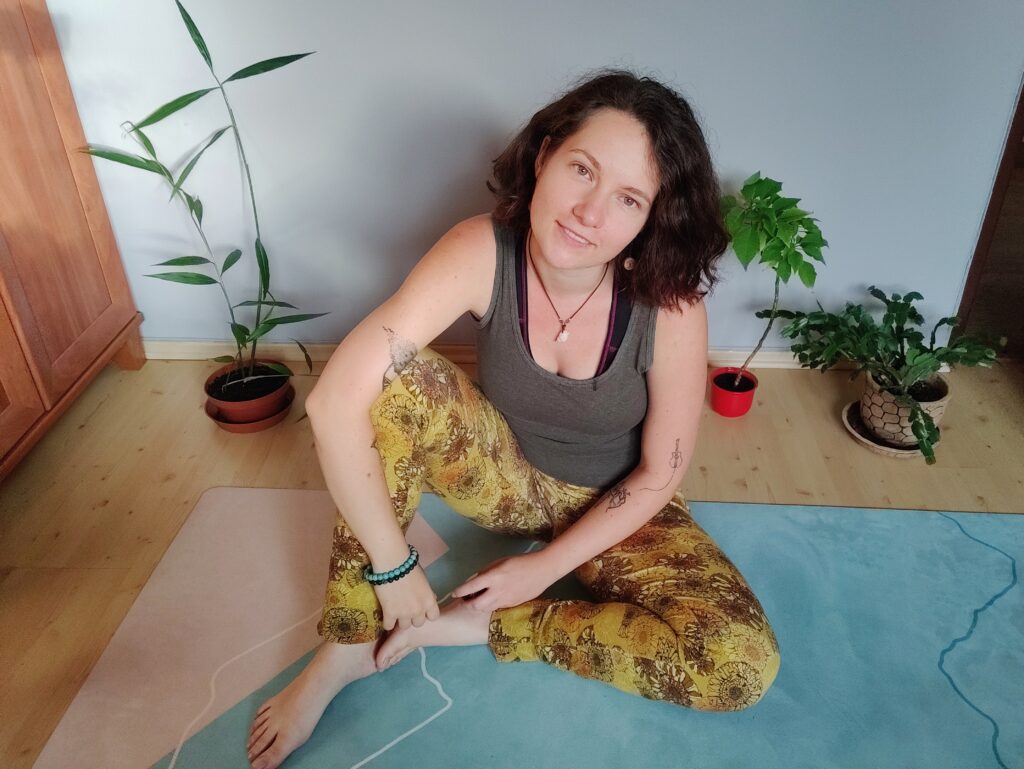Stress isn’t necessarily bad. It’s a natural part of life. Your body’s stress reaction can save your life!
Nature has it all figured out wonderfully! However, what mother nature probably didn’t expect was that the “modern and progressive” human society would end up stressing itself into oblivion on a daily basis…
What impact does omnipresent stress have on your body and mind? Can yoga help you fight it? Are you able to “hack” your autonomic nervous system?
Let’s start by taking a little biological peek into our nervous system first…
Table of Contents
The nervous system
- Central nervous system (CNS)
- Brain and spinal cord
- Peripheral nervous system (PNS)
- Somatic nervous system – voluntary
- Deliberate, conscious movements – muscle movement
- Autonomic nervous system – no conscious control, inner autopilot (heartbeat, breathing, secretion, …)
- Sympathetic – fight or flight, responds to danger (stress)
- Parasympathetic – “rest and digest”, controls immune system functions and digestion during rest periods (4)
- Enteric nervous system – the gut, our “second brain”, regulates function of the majority of abdominal organs, in particular the digestive tract, primarily autonomic, co-operates with the autonomic nervous system (5)
- Somatic nervous system – voluntary
The impact of stress on body and mind
Stress isn’t necessarily bad. It’s a natural part of life. Birth, death, relationships, breakups, moving houses, major changes, … All of these are stressful situations that are a necessary part of human existence.
Our body’s stress reaction can save our life! When we are met with a threat, the brain centre of fear, the amygdala, lights up and starts sending signals to the rest of the body that we’re in danger. Our body leaves its balanced state (homeostasis) and initiates the protection mode.
Stress hormones (cortisol, epinefrin – adrenalin, noradrenalin, …) are released and the “fight or flight” reaction begins. Our body switches into sympathetic mode which stimulates the target organs – the veins contract, heartbeat rises, the airways widen, levels of certain hormones rise, a lot of blood flows into the muscles, the heart and the brain and our body is ready to give maximum performance – to fight or flight (or to freeze – when the body thinks there’s no way of winning and decides to play dead instead). (1),(2),(5)
We all heard incredible stories of mothers lifting up cars their children got trapped below. We all heard stories of people who survived the atrocities of war and the hell of natural disasters. Their parasympathetic nervous system was on fire in these situations. Mother nature is incredible. Sometimes, we really are capable of miracles that wouldn’t be possible under “normal” circumstances.
Quid pro quo
When the sympathetic nervous system rules, the parasympathetic nervous system, which takes care of our immune system, supplies our internal organs with blood, slows-down heartbeat, supports digestion (which the sympathetic slows-down) etc., is pushed to the sidelines. (5)
There needs to be a balance between the sympathetic and parasympathetic for our bodies to function properly.
After big and stressful events we need to rest. We need to regenerate. We need to return our body into balance – homeostasis.
Sadly, that often doesn’t happen…
Stress vs. modern society
Mother nature has it all figured out beautifully!
However, what she probably didn’t expect was that the “modern and progressive” human society would end up stressing itself into oblivion on a daily basis…
Most of us only encounter the full blown “flight or flight” response very occasionally. We do, however, tend to live on an “orange alert” – we’re not in an immediate, life-threatening danger, but instead we have a constant supply of small doses of stress. Majority of us run on “orange alert” for days, weeks, months and even years. (Chronic stress.)
The sympathetic nervous system is holding the reins and keeps pushing the parasympathetic out of the game. Our body and mind constantly sound their alarms. They’re sending messages that something is wrong, that they need to switch off for a bit, but we ignore them completely because we’ve learned to accept these warnings as a normal part of our existence. So often we’re so disconnected from ourselves that we don’t even notice them…

We remain deaf and blind to our body’s and mind’s pleads until they can no longer send warning signals and are forced instead to send on us a stress induced panic attack or an (often serious) illness. (6)
Can you fight stress with yoga?
By practicing yoga, especially the slow and more meditative styles like yin and restorative, we can help our bodies to switch from sympathetic to parasympathetic mode. The greatest weapon we possess is our breath. By controlling the breath we can raise the tone of the vagus nerve which acts as mediator for the parasympathetic system.
“Special attention should be paid to the “tone” of the vagus (wandering) nerve. Vagal tone is an internal biological process that represents the activity of the vagus nerve. Increasing the vagal tone activates the parasympathetic nervous system. This means that a higher vagal tone will allow the body to relax significantly faster after exposure to stress.
In 2010, researchers found a positive connection between high vagal tone, positive emotions, and good physical health. In other words, the higher the your vagal tone is, the better your chances of improving your physical and mental health are, and vice versa. ” (7)
You can find out more about the nervus vagus HERE.
Dr. Nicole LePera spends an entire chapter talking about the nervus vagus and the polyvagal theory in her excellent book “How To Do The Work”. I very much recommend you read this book!
You can also find Dr. LePera on Instagram as @the.holistic.psychologist.
Other ways to activate the parasympathetic nervous system
- active muscle relaxation – restorative yoga or yoga nidra (yogic sleep),
- engaging in repetitive movements – Sun Salutations, swimming, knitting, crocheting, …,
- slowing down the breath and extending the exhale – pranayama. (2),(6)
- singing – yeeeeeey for all of us music obsessed peeps (1)
- cold exposure – yeeeey for all the WimHof fans)
So how’s your nervous system doing? Is it nicely balanced or are you living under the rule of a sympathetic dictatorship?
Practice yoga with me

Would you like to practice yoga with me? Head over to ENAE Yoga for online classes in English (along with 3 more amazing teachers) or to Yoga Zlín (cz) for in person classes in Zlín, Czech Republic. I can’t wait to practice with you!
Sources
- LePera, N., 2021. How to do the work. Orion Spring, pp.67-69, p.102.
- Klingrová, Z., 2020. Jóga proti úzkosti a stresu. Albatros Media, pp.53-55.
- Biomol-Med. 2018. Homeostáza | Biomol CZ. [online] Available at: <https://www.biomol.pl/cz/homeostaza> [Accessed 5 November 2021].
- Swansonová, A., 2020. Anatomie jógy. Euromedia Group, p. 23.
- Roberts, A., 2012. Kompletní lidské tělo. Praha: Knižní klub, pp.296-297.
- Brett Larkin Yoga. 2021. Top Online Yoga Teacher Training | 200HR YTT Certification. [online] Available at: <https://www.brettlarkin.com/online-yoga-teacher-training/> [Accessed 5 November 2021].
- www.oberonic.cz. 2021. Jak stimulovat bloudivý nerv pro lepší duševní zdraví (část první). [online] Available at: <https://www.oberonic.cz/jak-stimulovat-bloudivy-nerv-pro-lepsi-dusevni-zdravi-cast-prvni/> [Accessed 5 November 2021].

